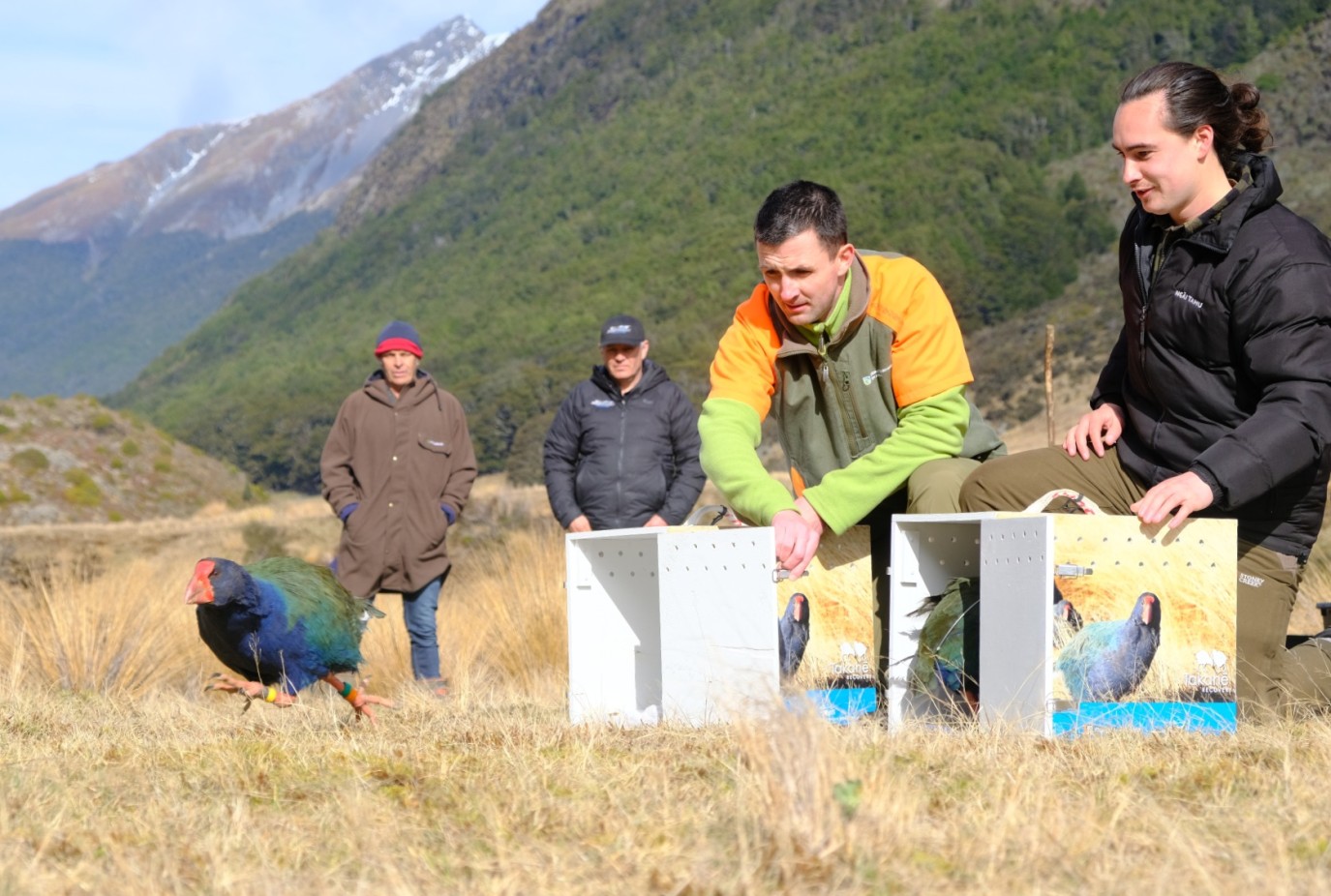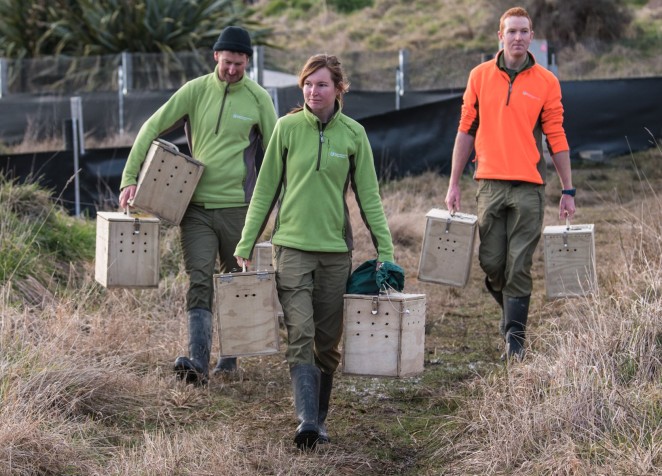Takahē released into Greenstone

Ngāi Tahu and the Department of Conservation (DOC) released 18 takahē on the Ngāi Tahu tribal property Greenstone Station last Wednesday.
Ngāi Tahu rangatira Tā Tipene O’Regan oversaw the release, having enjoyed a connection with takahē since an expedition with Dr Geoffrey Orbell in 1949.
"I have been enraptured by takahē since I was a boy, so it is very satisfying to release our taonga on our own whenua as we move towards a shared goal of seeing takahē throughout the Ngāi Tahu Takiwā," he says.
"Greenstone Station is a fitting home for our takahē. It has immense spiritual and cultural significance for Ngāi Tahu whānau and was a traditional pounamu and mahinga kai trading route between Te Tai o Poutini and Ōtākou."
Minister of Conservation Willow-Jean Prime was also on site to see the release of the nine breeding pairs.
DOC Takahē Recovery Operations Manager Deidre Vercoe says attempting to set up a third wild population is another pivotal step towards the goal of multiple takahē populations living wild.
"Around half of all takahē are now living in large wild sites, in the takahē homeland in Fiordland’s Murchison Mountains and in Kahurangi National Park, where takahē were first released in 2018," she says.
"With takahē numbers nearing 500 and growing at around 8% a year, new homes are needed. After decades of hard work to increase the takahē population, it’s rewarding to now be focusing on establishing more wild populations, but it comes with challenges.
"Establishing new wild native species populations can take time and success is not guaranteed. If we want takahē to thrive, we need to explore new sites and learn as much as we can to protect the birds now and into the future. We will closely monitor the takahē in the Greenstone Valley to see how they establish in their new home."
With the manu/birds now released, people walking the Greenstone Track or hunting in the valley will have the chance of seeing takahē roaming wild in their natural tussock land habitat.
Vercoe says the valley has the staple food for takahē including tussock, sedges, and Hypolepis millefoium – summer green fern – which sustains takahē through harsh winter conditions.
The trapping of stoats, ferrets and feral cats, by Routeburn Dart Wildlife with support from Southern Lakes Sanctuary, has knocked down predator numbers and made the release possible.
Another seven sub-adult birds will be released in October and up to 10 juvenile takahē early next year.










